Homdor Radovići Montenegro Luštica Bay Porto Montenegro Krtoli Tivat Kotor Adriatic Sea Beauty Lovćen Bay of Kotor


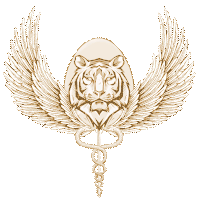
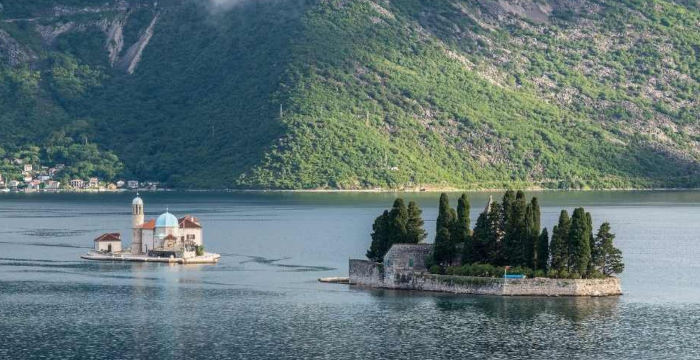
Boka is what the locals call it. It is short for Boka Kotorska, and it is magnificent.
The Bay of Kotor is the southernmost part of the Dalmatia region. One of its loveliest features are its islands, or islets, many of which house old churches and monasteries. Another, the medieval towns and fortifications.
People from Boka are called Bokelj (masculine) or Bokeljka (feminine).
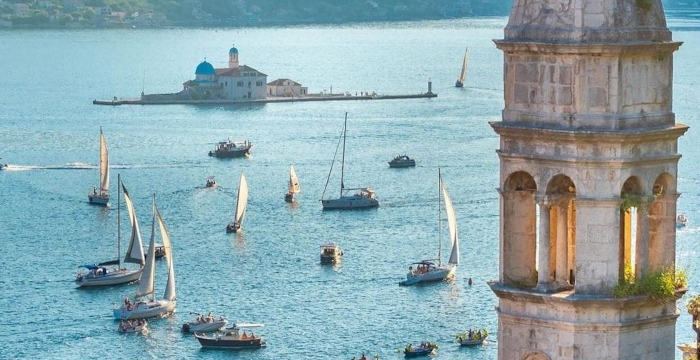
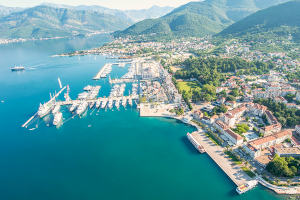
The luxury yacht marina and nautical 'village' is part of the coastal town Tivat, south of mount Vrmac.
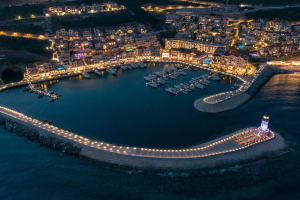
A recent development on the Luštica peninsula offering a marina, a resort, and luxury residences.
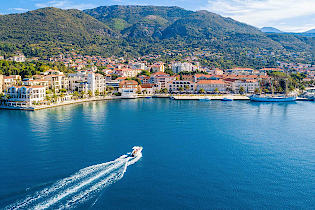
A coastal town with countless cafés, restaurants, and bars.
Tivat is not only home to Porto Montenegro, but also the main administrative center for this area.
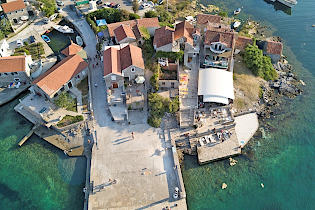
In the olden days, a place for the settlers, who lived in more protected parts, to keep their boats and wine barrels in their konobas. Nowadays, a quaint village with a mulo and an old beacon.
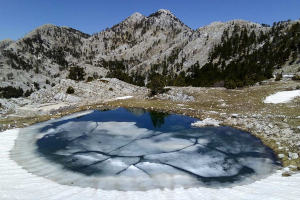
Northwest of Risan begins the Dinaric mountain range Orjen, with the highest peak of 1,895 m or 6,217 ft. There are several hiking trails. On the outskirts, Crkvice, the wettest inhabited place of Europe.
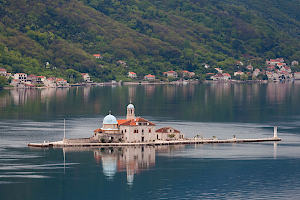
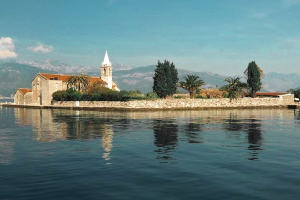
With a monastery Our Lady of Grace (Gospa od Milosti), also known as Our Lady of Mercy upon it, this is one of three islands in a series, located near Tivat, in the Bay of Kotor.
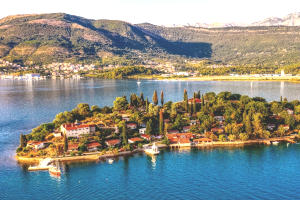
Also known as Miholjska Prevlaka or Island of St. Archangel Michael (Ostrvo Sveti Mihailo)
Positioned near Tivat, the Island of Flowers is connected with the mainland by a narrow isthmus.
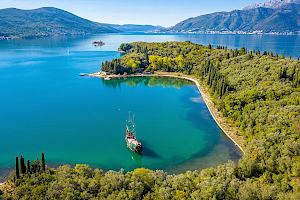
The name stems from the time, when Boka was part of the Republic of Venice.

Stradioti were the light cavalry
mercenary unit of the Venetian army.
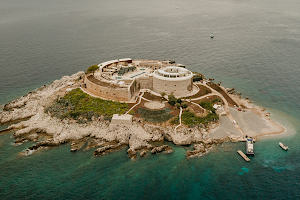
Right at the entrance to the Bay of Kotor, close to Žanjice, is one of Montenegro's UNESCO World Heritage Sites: The uninhabited islet with a 19thc. fort and a WWII prison was converted into a luxury hotel, and has been that since 2016.
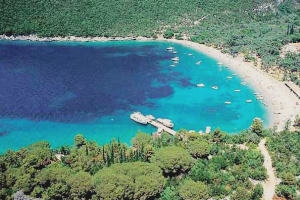
At the tip of Luštica, open towards the Adriatic sea, are the spectacular waters of Žanjice beach.
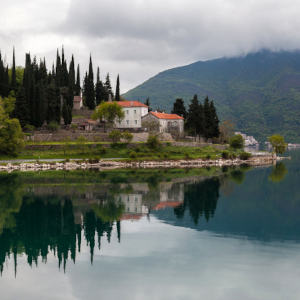
Risan traces its origins to the ancient settlement of Rhizon, the capital of the Illyrian kingdom. It is the oldest settlement in Boka (the Bay of Kotor).
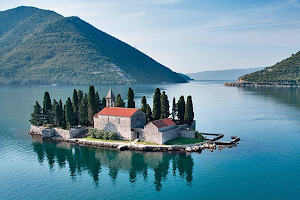
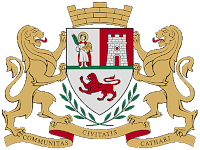
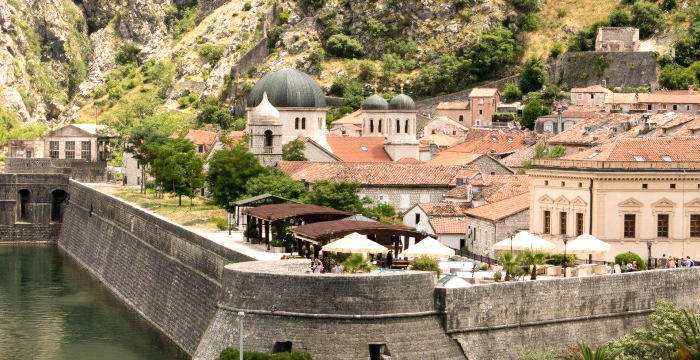
To say that Kotor is an old town is an understatement. It has been settled for more than two millennia! It was populated by Illyrians, Ancient Romans, Venitians, and others, and fortified since the early Middle Ages. Kotor is a double Unesco World Heritage Site.
Entering the old town and traversing its winding paths, colorful with shops, cafés, and merchants, one almost feels transposed to another time, though the modern amenities throughout somewhat 'ruin' the absoluteness of that effect.
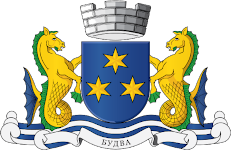
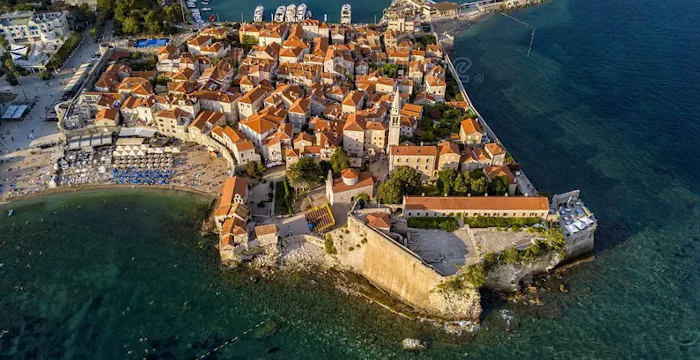
Budva is an old town which dates back to the times of Ancient Greece and Rome. The old 'city' is still there today, just that it is meanwhile surrounded by buildings which do not look as if they were the original inspiration for a medieval real-time strategy game. One could say that time has simply caught up with it. Today, Budva is better known for a diverse nightlife, and beaches.
Though not part of the Bay of Kotor, Budva is close enough to be considered family, or part of the coastal unit. It is roughly 24 km away from Tivat, 23km from Kotor, and 26km from Luštica Bay.
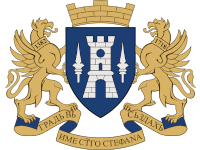
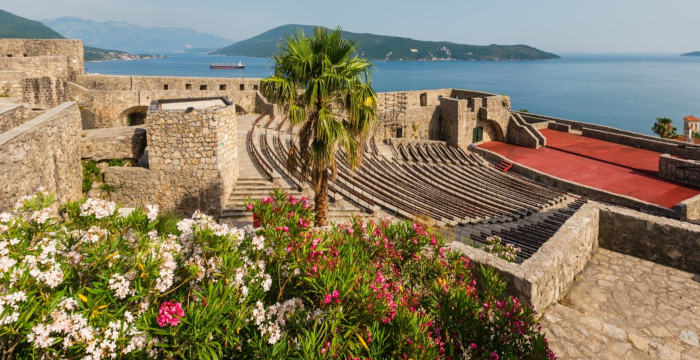
Known as Castelnuovo in Italian, Neòkastron in Greek, or Kala-i Novi in Turkish, they all mean New Castle. Having been founded in the 14th century makes Herceg Novi one of the youngest settlements in Boka.
These days, along with Tivat and Kotor, it is one of the hotspots for concerts and events in the bay area.
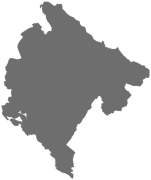
A small country of roughly 630.000 inhabitants with much to see. By car, everything is just a couple of hours away!
Montenegro is a strangely beautiful mixture of untamed nature and luxury hotspots. Things exist here that no longer exist elsewhere! Or rarely exist elsewhere... Wherever there are people, untamed nature can turn into neglect. That's when the organized tourist-oriented mindset can surprise, seeming almost beneficial, as it transforms neglect into something neatly designed and enjoyable. However, Montenegro still has the other kind too: untamed nature which has managed to remain pristine.
From our point of view, that is worth more than all the gold in this world.
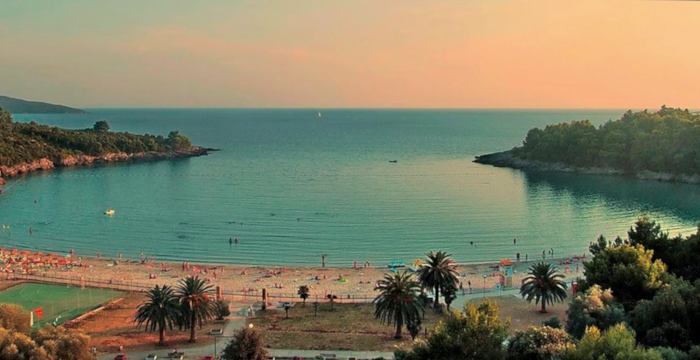 An old photo of Plavi Horizonti or Pržina
An old photo of Plavi Horizonti or Pržina
Just a few minutes walk from Radovići and Homdor, towards the open sea, is the sandy beach of Plavi Horizonti. "Blue Horizons." It is also known as Pržina.
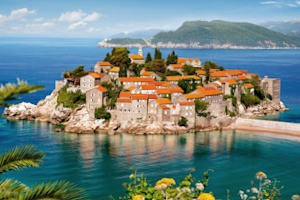
Sveti Stefan is a small island, now connected to the mainland by a tombolo, and a small town of 364 inhabitants in Budva Municipality, approximately 6 kilometres southeast of Budva.
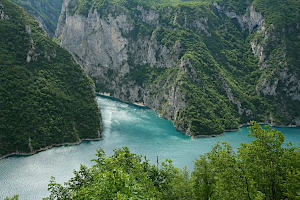
The Tara canyon, which is part of the Durmitor National Park is blissfully pristine - even today! The upper parts of the canyon are only accessible by hiking or rafting.
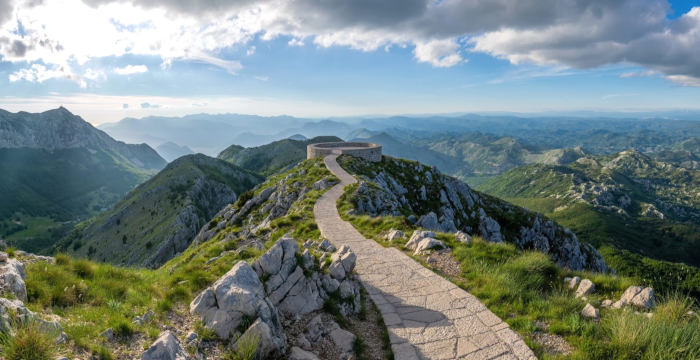
Lovćen is a mountain and a national park, with hiking trails and panoramic views. It is also the origin of the names Montenegro and Crna Gora. Both mean 'Black Mountain', and refer to Mount Lovćen, which has two imposing peaks: Štirovnik of 1,749 m or 5,738 feet and Jezerski vrh of 1,657 m or 5,436 feet.
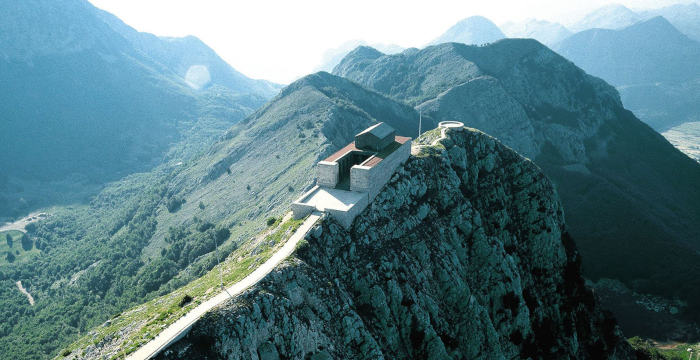 Njegoš Mausoleum at the top of Lovćen
Njegoš Mausoleum at the top of Lovćen
The most important monument of the Lovćen national park is the Mausoleum of Njegoš (1813-1851), the Prince-Bishop of Montenegro, and renowned poet and philosopher.
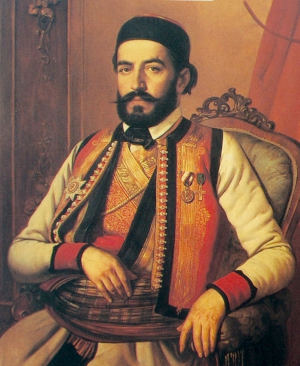
Portrait of Petar II Petrović-Njegoš
by Johann Böss
The burial place at the summit of Jezerski vrh was chosen by Njegoš himself. It was his last wish.
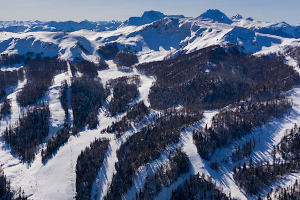
In the northern part of Montenegro, there are plenty of skiing opportunities, such as in Kolašin, which is known for its beauty in various seasons.
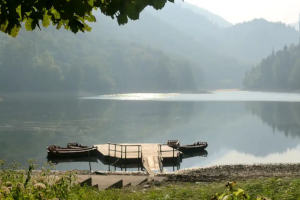
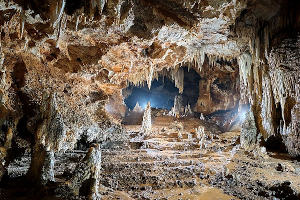
Close to Cetinje, the cave starts by the Lipa settlement (hence the name). Lipa Cave is one of the largest caves of Montenegro, with passages, halls, and an underground river.
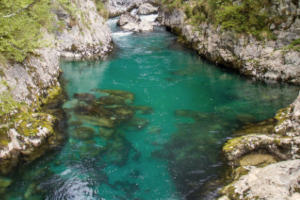
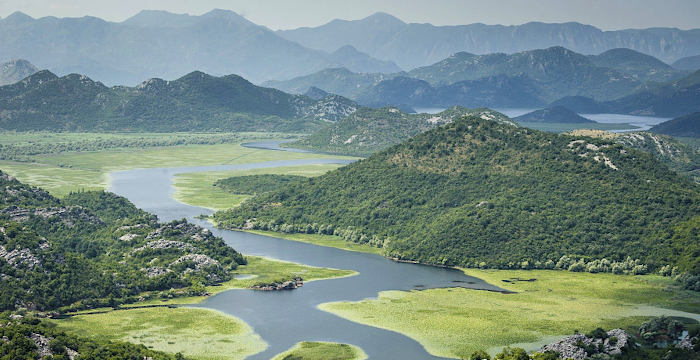
Skadar is the largest lake in Southern Europe with fresh water sources at the lake bottom. The Montenegrin part of the lake and its surroundings are a national park. Skadar is said to be an ancient lake. That means, it has consistently carried water for more than one million years.
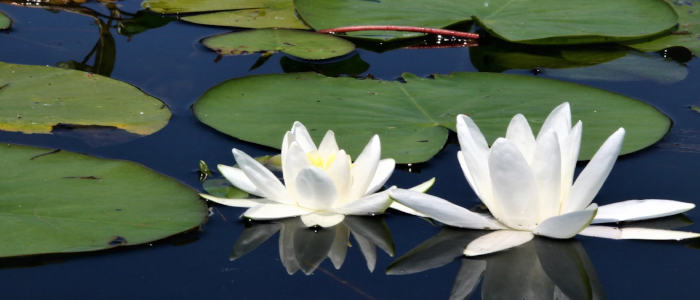
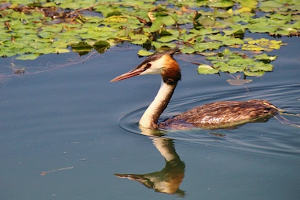
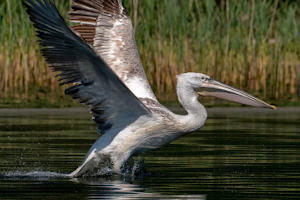
With over 270 species of birds living on Skadar lake, it has the status of an internationally significant place for birdlife (IBA).
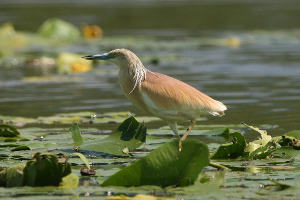
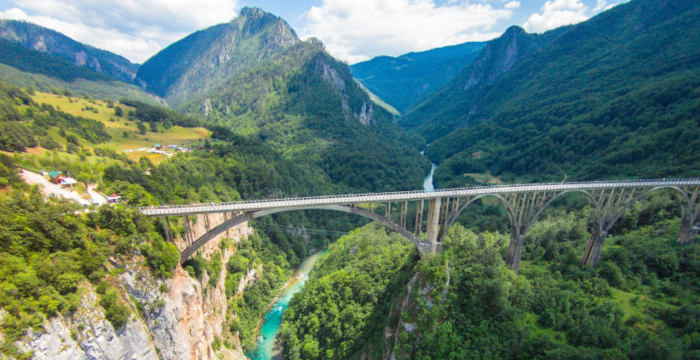
"The UNESCO-designated Durmitor National Park is a “world heritage of mankind” within the Biosphere Resource Network. The park covers about 39,000 hectares and includes the entire Durmitor Massif, with an average altitude of 1,500 metres and includes 48 mountain peaks over 2,000 metres high. The highest peak is Bobotov Kuk, which reaches 2,523 metres. There are also 13 glacial cirques, 18 glacial lakes, three canyons: the Susica, Komarnica, and the Tara, which is the second longest canyon in the world."
Source: Via Dinarica Alliance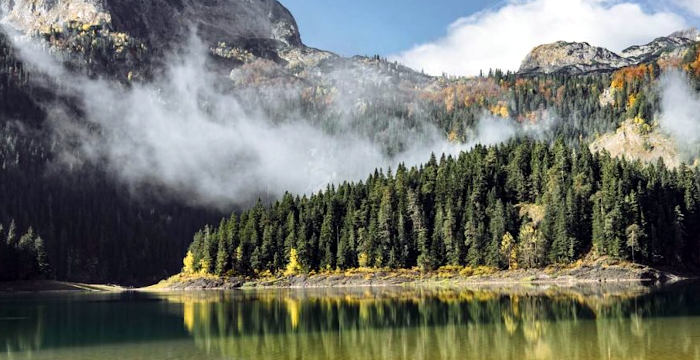
Black Lake (Crno Jezero) is a glacial lake on Mount Durmitor, at an elevation of 1,416 m. Surrounded by a walking path, it actually consists of two lakes (Big Lake & Little Lake), filled by numerous mountain streams. In the summer, the narrow strait between them dries up, revealing the two separate bodies of water.
The town Žabljak is 3km away, so well within walking distance. Directly at the lake, there is only a single restaurant, serving traditional Montenegrin dishes.
Other noteworthy lakes: Trnovačko Lake, Lake Biograd, Lake Piva, and the aforementioned Skadar.
Montenegro's breathtaking natural border
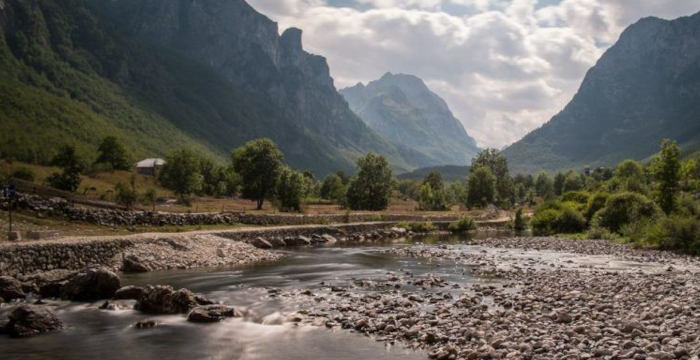
In the country's east, bordering on Albania and Kosovo are the Accursed Mountains or Prokletije. Over 20 of its summits rise beyond 2500 meters above sea level. One of them, Zla Kolata, is the highest peak of Montenegro.
A Mega Hiking Trail Across the Western Balkans
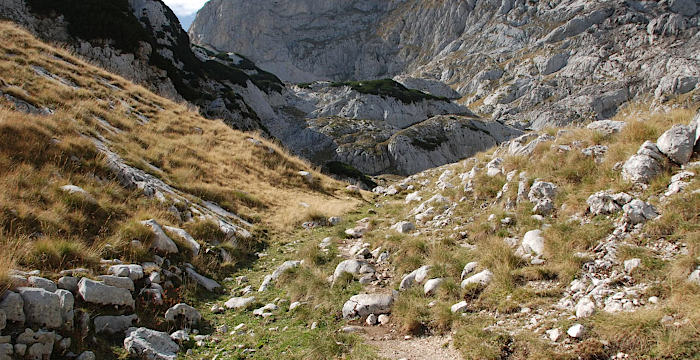
Via Dinarica consists of three hiking trails connecting the following countries: Slovenia, Croatia, Bosnia and Herzegovina, Montenegro, Serbia, Kosovo, and Albania. The White Trail, which is the main route in Via Dinarica and the Blue Trail, which focuses more on the coast of the Adriatic sea, traverse Montenegro.
Bjelila via [montenegrogirl.com], Boka, 2nd via [pmyc.portomontenegro.com], Luštica Bay via [lusticabay.com], Porto Montenegro via [smartmontenegro.com], Prokletije via [www.chasingthedonkey.com], Tivat via [www.getyourguide.com], Via Dinarica via [www.lonelyplanet.com], Žanjice via [www.bastabalkana.com]